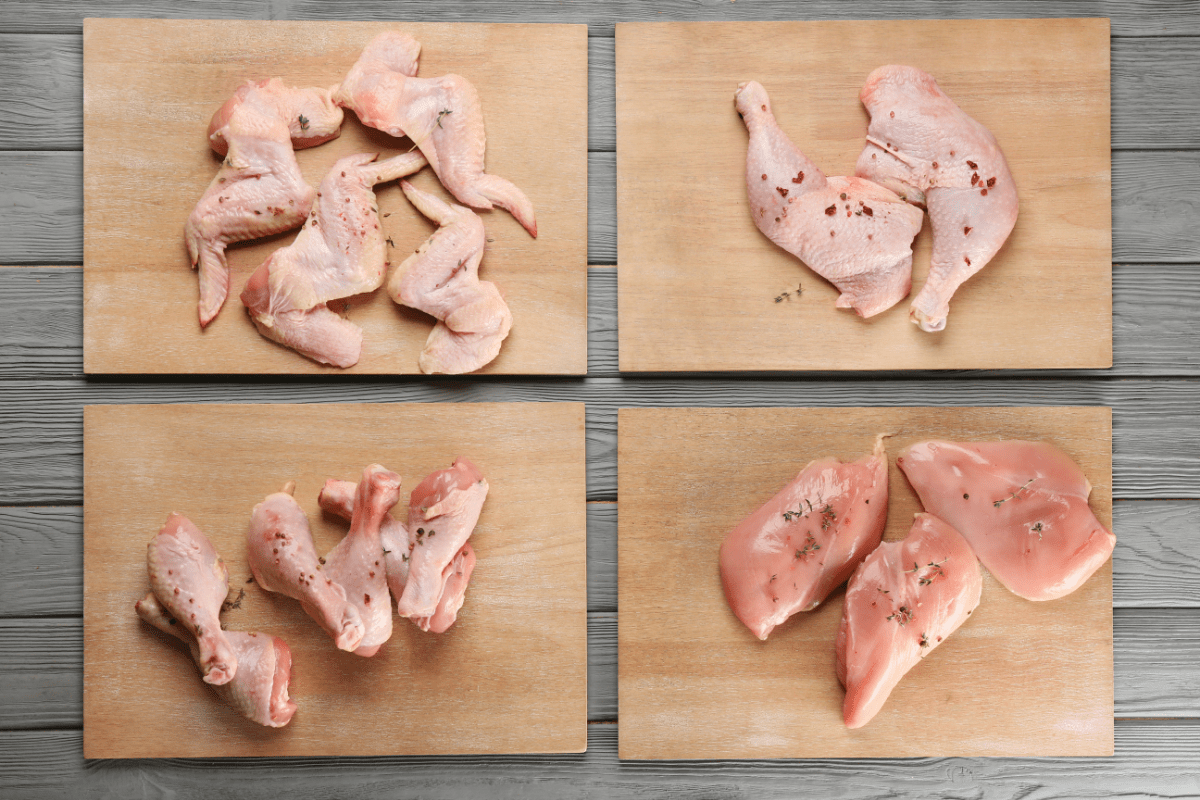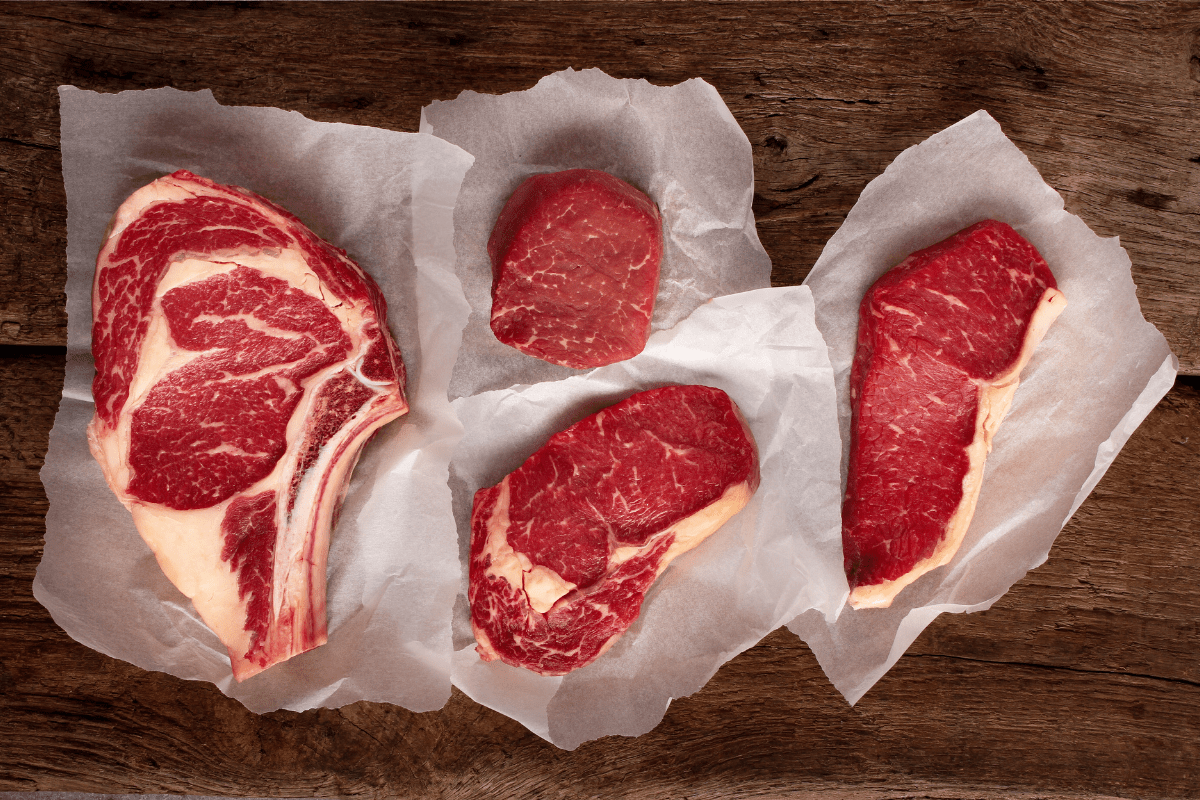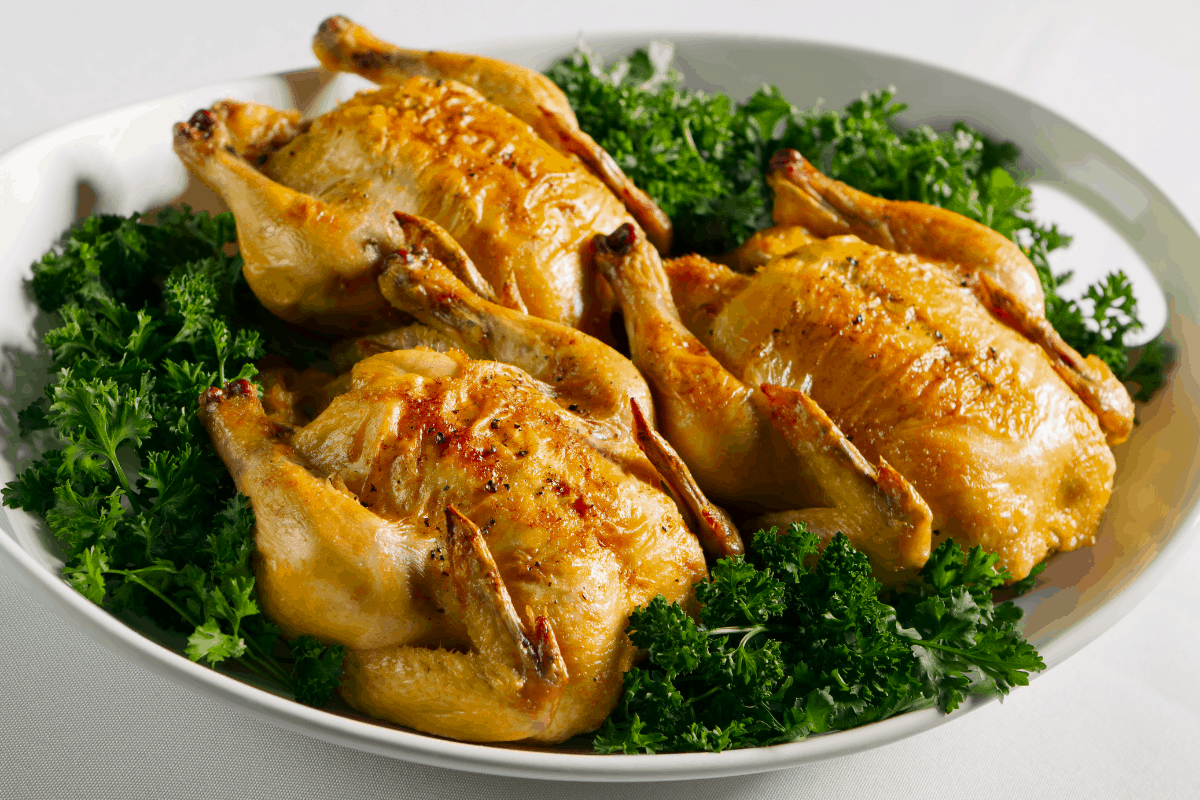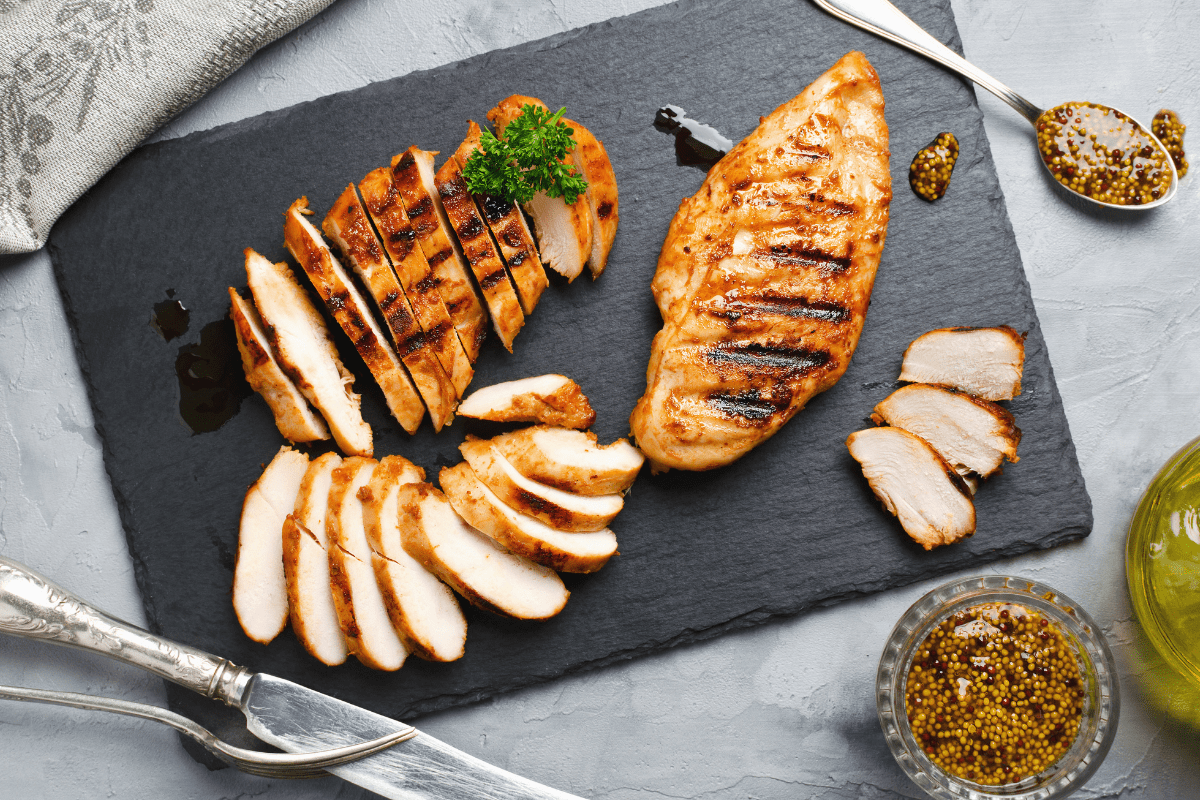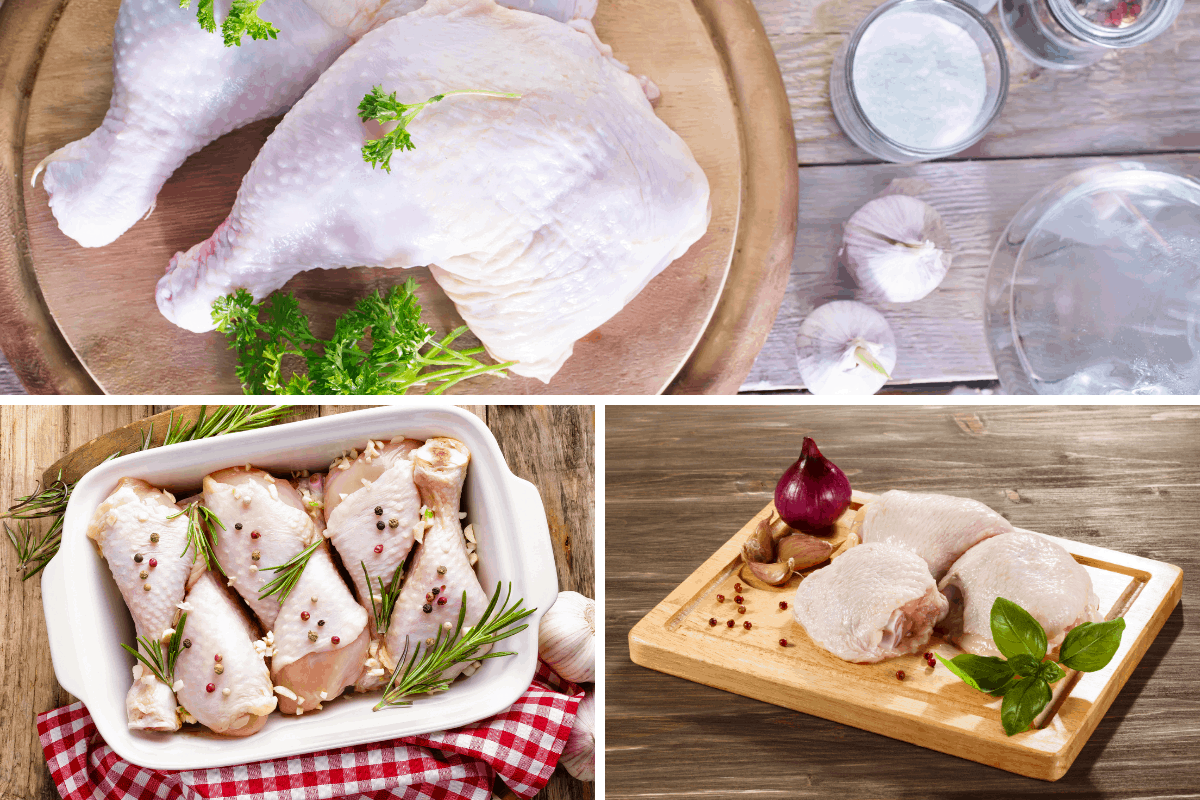You have probably noticed that when you buy fresh raw chicken, whether it be pieces or whole birds, that it has a shorter shelf life than other meats.
So why does chicken spoil quicker than other raw meats? Chickens live with certain bacterial pathogens within thier system such as Campylobacter, Salmonella and E-Coli. These pathogens stay within the bird after it has been slaughtered and processed for sale. It is partly down to these bacteria that causes the raw chicken to go bad more quickly than other meats such as beef, pork & lamb.
We will now look at what you should do to help extend the shelf life of your raw chicken products.
So What Causes The Raw Chicken To Go Bad So Quickly?
Campylobacter, Salmonella and E-coli pathogens are types of bacteria present during the life of the chicken. These bacteria remain present after slaughter and processing, and it is the presence of these bacteria that causes spoilage.
The more bacteria that are present within the meat, and having conditions that allow them to mulitply, the quicker the meat is going to spoil. Some of these bacteria can double every 20 minutes under the right conditions, known as the ‘Danger Zone’ .
This means that a single bacteria can multiply into over 60 thousand bacteria in as little as 5 hours!!!
How Many Bacteria Are Present In Raw Chicken Meat?
Every chicken produced will have a different amount of bacteria present within the meat. That is why you can sometimes get a package of chicken breasts and one breast seems to be ‘off’ whilst the others appear fine.
The way the chickens have been reared and processed will also be a major factor in how many pathogens are present.
In the USA, chickens are often washed with a chlorine solution to try to reduce the amount of pathogens contained within the meat. Although controversial in other parts of the world, such as the European Union where chlorinated chicken is banned, the practice is not harmful to health.
It is argued that chlorine washing would not be required if the chickens were raised processed in more hygienic surroundings, and that even with the chlorine washing, up to 2 Million Americans get food poisoning from poultry every year [source]. This is much higher than in countries within the EU where chickens are reared in better conditions and so naturally have less pathogens within the meat.
We have written an article about chlorinated chicken here.
How Do I Reduce The Bacteria In My Chicken?
The bacteria will already be present within the raw chicken meat when you purchase it from the grocery store or butchers. As mentioned earlier, it is present in all chickens an so cannot be avoided.
However, how you store and handle the chicken after purchase will determine whether those existing bacteria have the opportunity to multiply.
Food Borne bacteria need food, moisture and ideal temperatures to survive and multiply. If these conditions are met, every single bacteria has the opportunity to double every 20 minutes.
To combat this growth, you must remove one or more of these ideal conditions. As the chicken itself is the food for the bacteria, and meat has natural moisture, the remaining element that we get to control is the temperature.
We have two opportunities to slow the growth and kill these harmful bacteria. Cold storage at less than <40oF and high temperature cooking of above >165oF.
Prior to using the chicken for your meal, you want to ensure that the meat is kept under refrigeration at all times. The ideal temperature that you should store the chicken is 40oF/4oC or colder. This will slow down or prevent the existing bacteria from multiplying.
When cooking, you need to ensure that a temperature of 165oF/75oC or higher is reached in the thickest part of the meat. This temperature is high enough to kill any pathogens that are present and prevent you from getting sick.
If you are not serving the food straight away, you must ensure that it is kept at a minimum holding internal temperature of 150oF/65oC.
An internal cooking probe is a vital piece of equipment for any kitchen and takes all the guess work out of cooking. These probes are relatively cheap (approx $10 on Amazon) and not only prevent undercooking, and risking potential food poisoning, but also over cooking and ruining a good piece of meat.
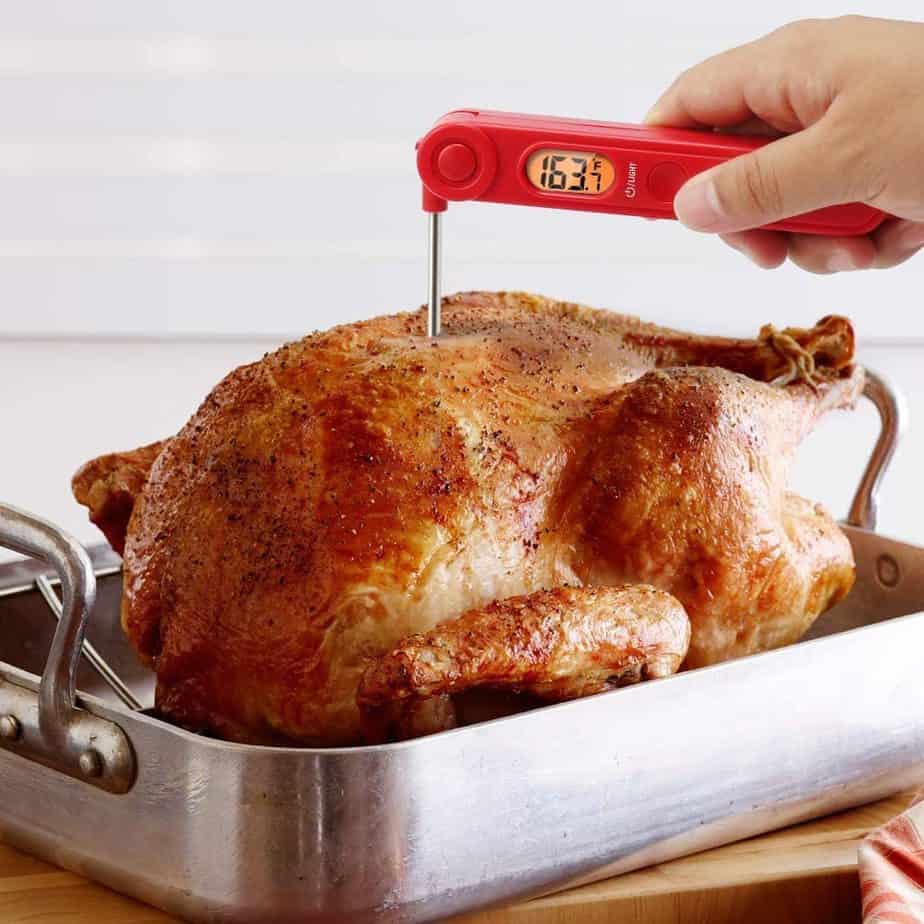
Any raw or cooked chicken kept between 40oF – 140oF is known to be in the danger zone and is the ideal range for the bacteria to start multiplying and potentially cause food poisoning!
Raw Chicken Storage Options To Prevent Spoilage
There are several ways that you can store your raw chicken to help prevent spoilage from happening so quickly. All of these options will slow down the multiplication of the bacteria present within the meat.
Refrigeration
Ensuring that you keep the meat refrigerated at a temperature below <40oF/5oC will help to dramatically slow down the bacteria growth. The colder you keep the meat stored, the slower the growth will be and the longer the meat will last. A difference of 10oF cooler could see your meat last an extra day or two.
Be sure to store all raw meat, but particularly raw chicken on the bottom shelf of your refrigerator. This will prevent the possibility of cross contamination from chicken juices dripping onto other food products stored in the refrigerator.
Freezing
If you do not intend using the chicken straight away, then freezing the meat will prevent further bacterial growth.
Here are some tips for correct freezing:
- Wrap the meat airtight in zip loc bags or freezer paper to prevent freezer burn
- Label the package with the name of contents, and the useable life left after thawing.
- Remember that whatever useable life is left on the chicken prior to freezin, will be the same after defrost. For example, if you are freezing the chicken breasts because they have reached their ‘use by’ date, then ensure you label the freezer package with ‘Chicken Breasts: use on day of defrost‘ – If you have bought the meat to freeze straight away and it still has 3 days left before the ‘use by’ then label ‘Chicken Breasts: use within 3 days of defrost‘
- It is best to thaw frozen meat in the refrigerator. Allow 24hrs thawing for most chicken pieces. You may need up to 36hrs for colder refrigerators or larger birds / packages.
- Make sure that the chicken has fully thawed prior to using, or increase the normal cooking time if still partially frozen.
Vacuum Sealing
Vacuum packing will seal the raw chicken in a pouch with all the air removed. The bacteria need air to multiply and so the vacuum sealing, along with storing in a cold refrigerator, can add almost a week to the shelf life of the chicken without the need for freezing.
Vacuum sealers have come a long way in recent years and are now an affordable storage option for many people. Popular models are available on Amazon for as little as $65.

